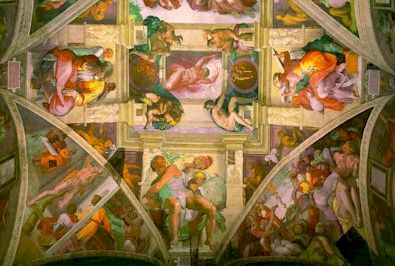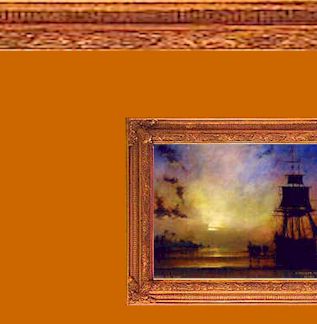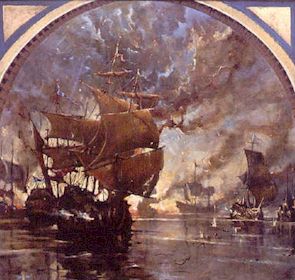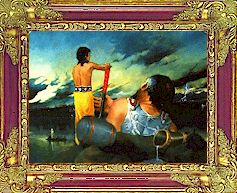|
Historical developments
It is useful to understand the evolution of the picture frame. Frames evolved from painted decorations of architraves and cornices that surrounded frescoes on walls and ceilings (as in the Sistine Chapel below), to actual plaster and timber mouldings used when oil paintings became transportable. Today frames have become ‘stand alone’ items of mass production.

From the early renaissance architectural fashion has often determined the design of frames. Popular architrave, cornice and skirting designs, often in miniature, formed the frame. If you desired to frame a Watteau painting, if you are lucky enough to possess one or one you painted yourself in the Rococco style, then you should check out the famous houses of the period noting all their architraves and cornices. The great decorators and designers of past eras were usually universally consistent in their style. This approach can be just as valid today so look to architraves and cornice when deciding what frame to use (see below).

I have sometimes taken to painting decorations or frames on the canvas to achieve a historical effect as in the following example below.

From an artists point of view this allows you to paint a frame before the framer gets his hands on it. Other artists throughout the centuries such as Rubens, Tieopolo and Raphael have done the same often using fruit, leaves vines etc. as decoration. Some might argue it is a tradition worth keeping if only to keep the apprentices active.
With the development of oil painting as a medium and canvas as its ground it became important to protect these new 'mobile' or moveable works of art. Obviously someone had the bright idea to make the frame perform all functions, protection, decoration and finally as part of some intended environment (room). All this has led to much confusion with a minefield of styles, frame mouldings and architecure to negotiate.
So a picture frame can have certain characteristics and many functions;
1. Protect the painting
2.Unify the painting with the architectural style of the room as in repetition of color style or other design elements.
3. Separate the painting from the wall.
4. Tunnel the attention to the painting so it will become the focal point of a room.- or do the reverse.
An artist may require the frame can echo all the qualities of the painting. Accents of similar texture, color, line or shape.
Echoes between painting and frame:
Just as parts of a painting can relate to each other in echoes of texture, color and form so can the relationship between the frame and the painting. This is a relationship the renaissance artists knew well. Some of these relationships I demonstrate in the following example. More can be observed on the following page.

This traditional example (above) only works in isolation and miniature as most eliments are fierce. However, texture of frame and breastplate, color values of frame, sky, armour and directional form match. The frame struggles to confine the painting and will only succeed if surrounded by a bland background. The frame is a color compliment of the painting while the gold still echoes the strong yellows.
We are now going to simplify things and examine three elements. The painting, the frame and the background.
|